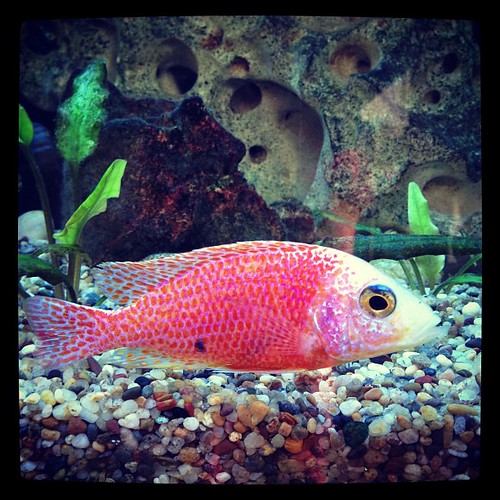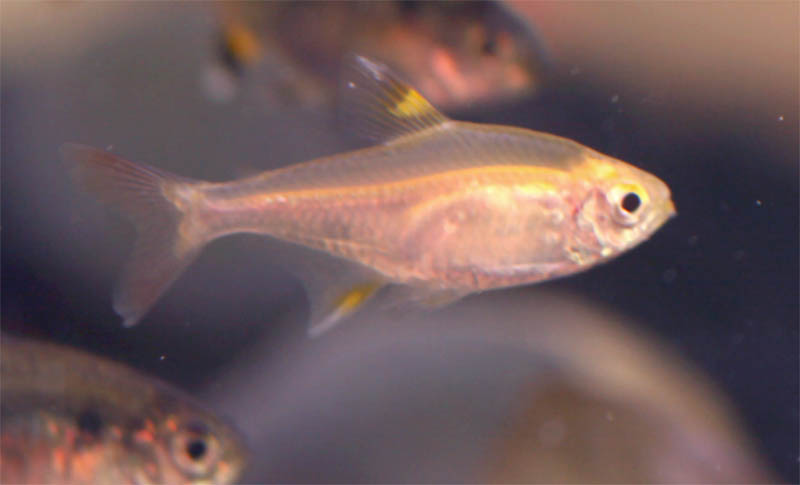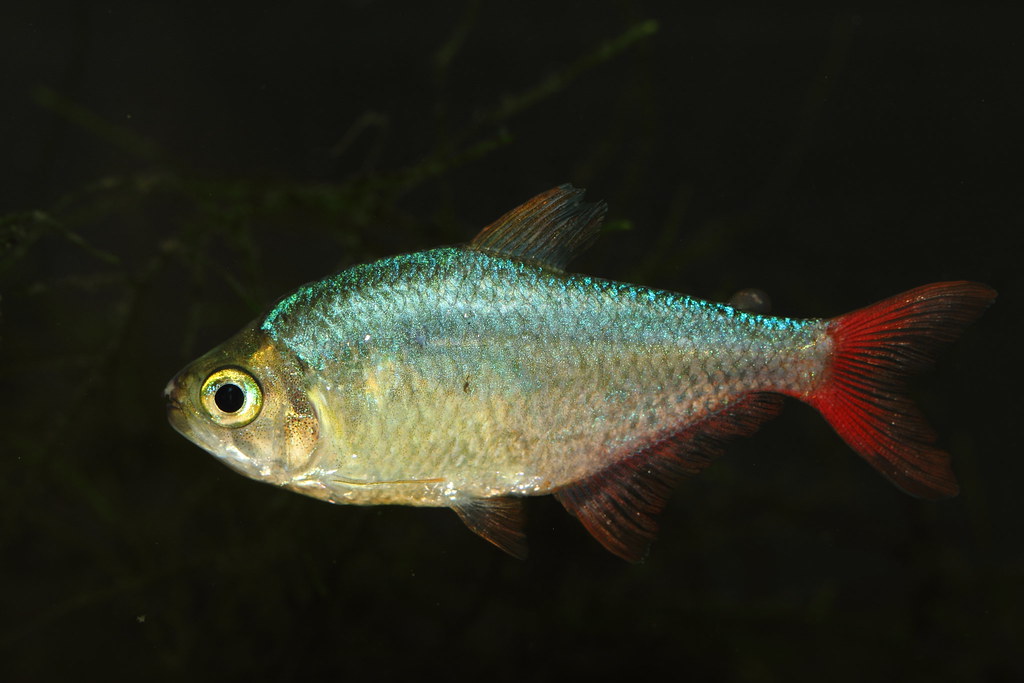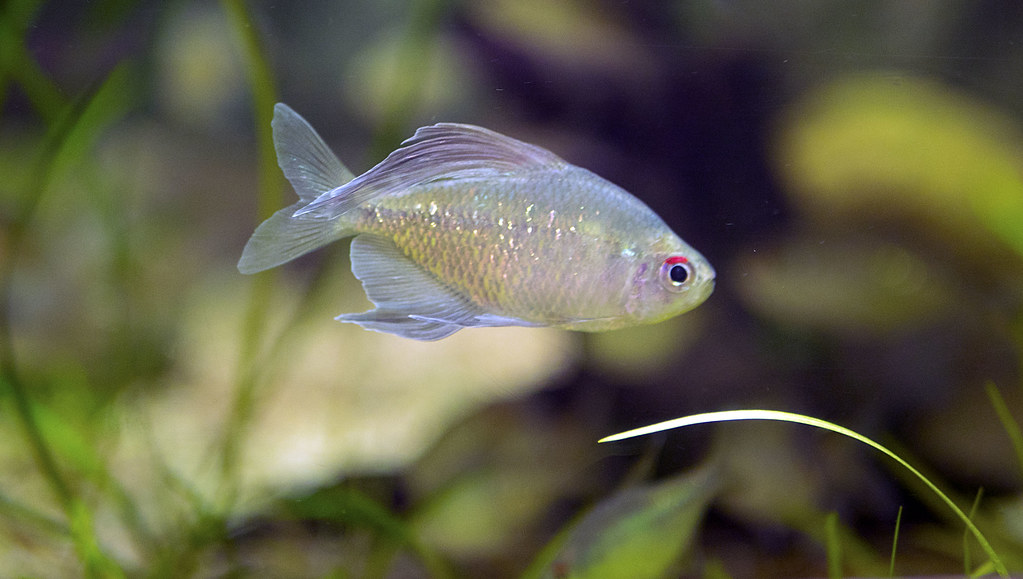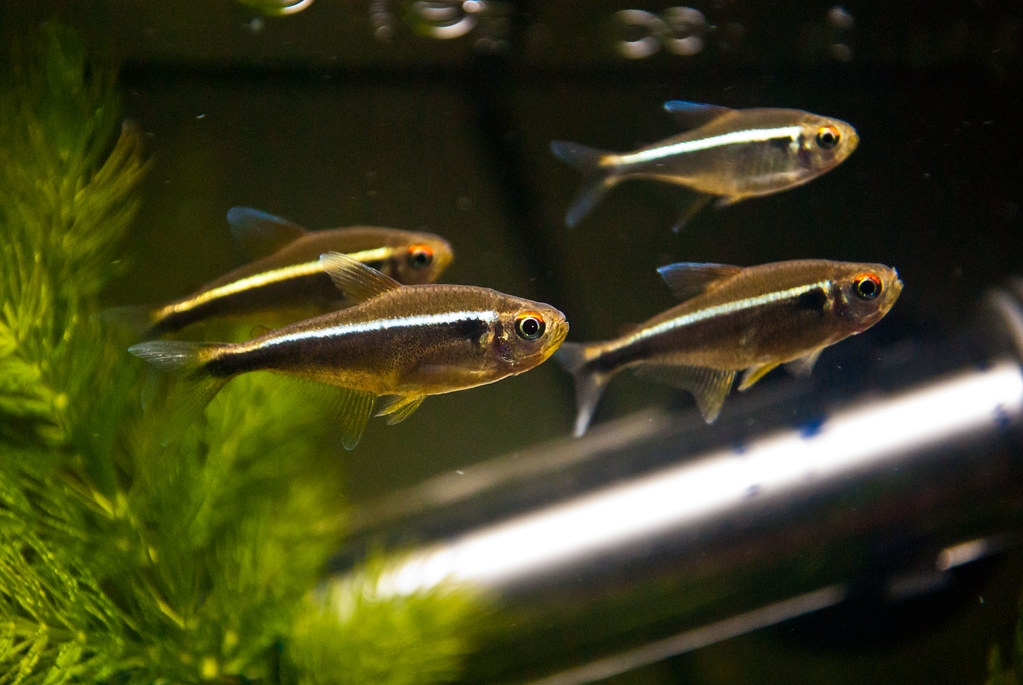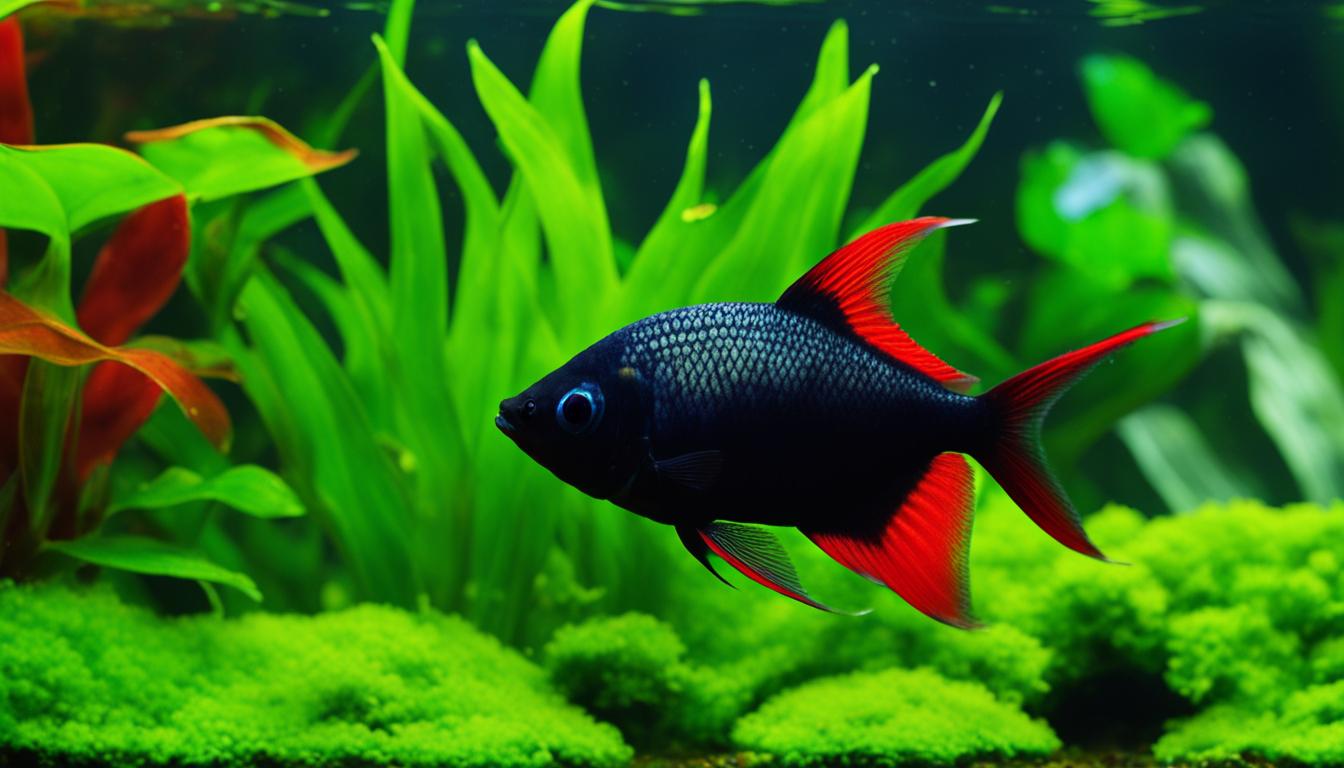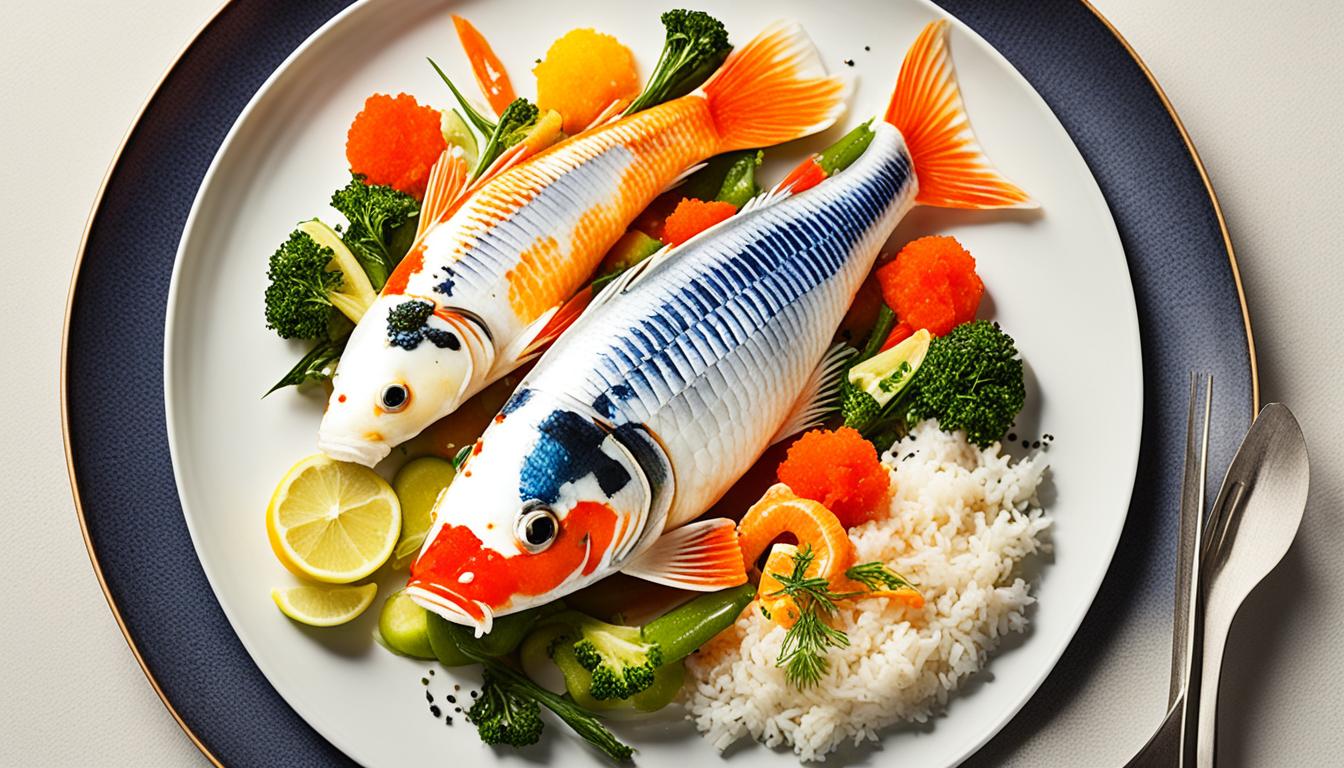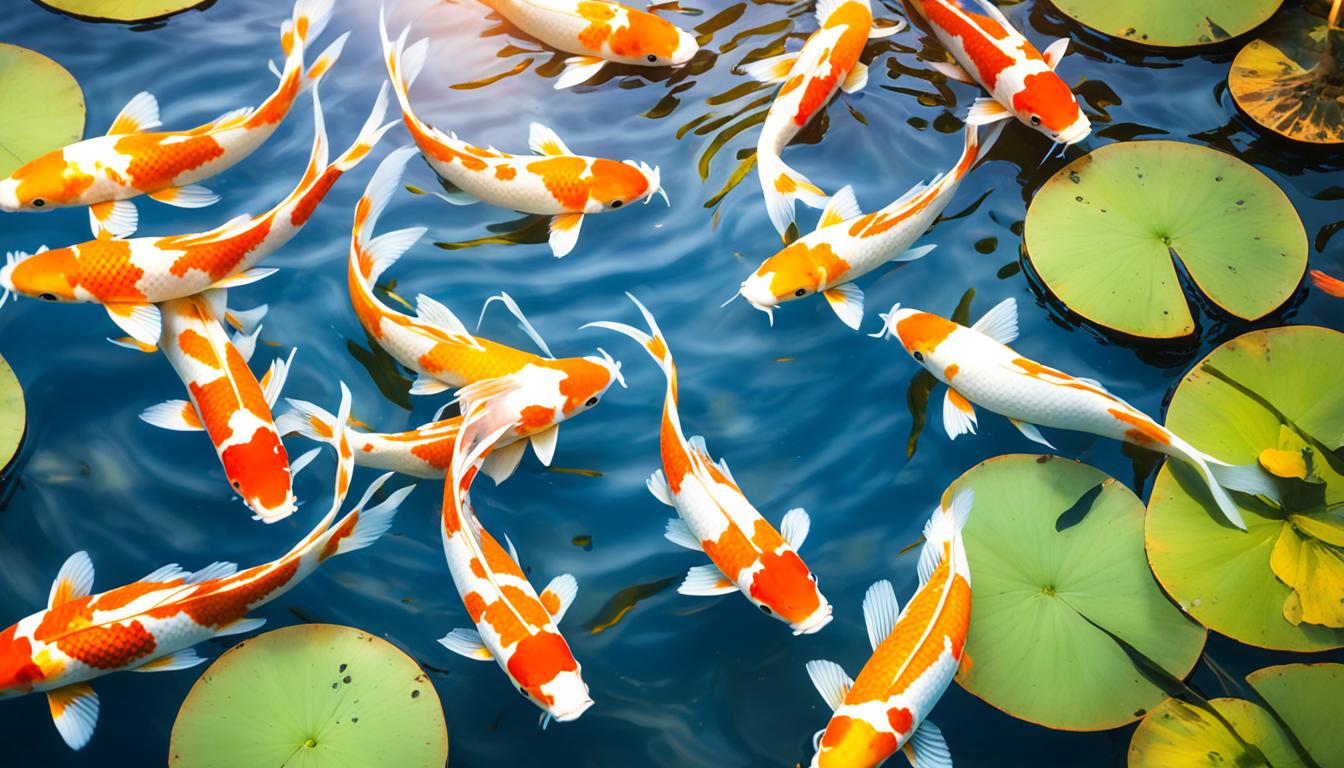The Strawberry Peacock cichlid is a semi-aggressive fish that requires a proper male-to-female ratio to prevent conflicts. They are territorial and require adequate space to prevent aggression.
This African cichlid prefers live foods but will also accept frozen, flake, or pellet foods. They can become territorial while breeding and spawning. The strawberry peacock cichlid is a brightly colored freshwater fish that forms a matriarchal family. Understanding their behavior and providing suitable tank mates and conditions is key to successful care of these fish.
Strawberry Peacock cichlids are classified as semi-aggressive, but the proper ratio of males to females can help prevent conflict. One male to every four females is best. They are territorial, so the fish must have space to prevent chasing and biting. While generally peaceful, they may become territorial while spawning. This African cichlid is carnivorous and prefers live foods such as bloodworms, snails, or brine shrimp. However, they will generally accept frozen, flake, or pellet foods. Providing a well-balanced diet and suitable tank conditions is essential for the care and well-being of these colorful freshwater fish.
Table of Contents
Appearance And Characteristics Of Strawberry Peacock
The Strawberry Peacock is a peaceful freshwater cichlid known for its vibrant appearance. With its red-orange color and distinctive pattern, this fish adds a pop of color to any aquarium. It is a carnivorous species that prefers live foods but can also accept frozen, flake, or pellet foods.
Description Of The Physical Features And Body Structure:
- The Strawberry Peacock is a visually stunning fish that attracts attention with its vibrant colors and intricate patterns.
- This species is known for its elongated body, slightly compressed laterally, and a rounded head.
- It has large, expressive eyes and a small mouth that is located in the front of its face.
- The dorsal fin is set far back on the body, and the caudal fin is fan-shaped and symmetrical.
- Strawberry Peacocks also have pectoral and anal fins that are well-developed and complement the overall appearance of the fish.
Eye-Catching Vibrant Colors And Patterns:
- The Strawberry Peacock is renowned for its eye-catching and vibrant colors.
- The base coloration of this fish is a bright orange-red, resembling the ripe fruit it is named after.
- The body is adorned with vertical bars that range in color from metallic blue to black.
- Males often display a reflective sheen on their scales, giving them a shimmering effect in the light.
- The fins of the Strawberry Peacock are also brightly colored, with shades of blue, yellow, and red.
- These striking colors and patterns make the Strawberry Peacock a true gem in any aquarium.
Size And Growth Potential Of The Strawberry Peacock:
- The Strawberry Peacock is a relatively small species of cichlid, with adult males reaching an average length of 4 to 5 inches (10 to 12 centimeters).
- Females are slightly smaller, typically growing to around 3 to 4 inches (8 to 10 centimeters).
- When provided with proper care and a suitable environment, Strawberry Peacocks can thrive and reach their full growth potential.
- It’s important to note that the size and growth rate of individual fish may vary depending on various factors such as genetics, diet, and water conditions.
- With proper care and a healthy environment, a Strawberry Peacock can live for several years and provide enjoyment to aquarium enthusiasts.
Natural Habitat And Distribution
The Strawberry Peacock, a freshwater cichlid, is native to Austin, Texas, United States. It is a peaceful fish that can become territorial during spawning. This semi-aggressive cichlid prefers live foods but will also accept frozen, flake, or pellet foods.
*The Strawberry Peacock is a strikingly beautiful cichlid that is native to the African Great Lakes, where it is predominantly found. Let’s take a closer look at its natural habitat and distribution. *
Overview Of The Native Environment Of The Strawberry Peacock
The Strawberry Peacock is native to the African Great Lakes, specifically Lake Malawi and Lake Malombe. It is endemic to these lakes, meaning it is found nowhere else in the world. This cichlid species thrives in the rocky shorelines and sandy bottoms of these lakes, where it can find plenty of hiding spots and feeding opportunities.
Mention Of The African Great Lakes Where They Are Predominantly Found
The African Great Lakes, including Lake Malawi and Lake Malombe, are home to a vast array of cichlid species, and the Strawberry Peacock is one of them. These lakes provide the perfect environment for cichlids, with their clear waters, rocky structures, and abundant food sources.
It is no wonder that the Strawberry Peacock has flourished in these habitats.
Water Conditions And Temperature Requirements
The Strawberry Peacock is adapted to a specific set of water conditions and temperature requirements in its natural habitat. Here are some key points to know:
- Water temperature: The ideal temperature range for the Strawberry Peacock is between 76 to 82 degrees Fahrenheit (24 to 28 degrees Celsius). This warm water allows the cichlid to thrive and display its vibrant colors.
- PH level: The pH level of the water should be around 7.8 to 8.6, which is slightly alkaline. This mimics the natural conditions of the African Great Lakes and promotes optimal health for the Strawberry Peacock.
- Water hardness: The ideal water hardness for the Strawberry Peacock is between 10 to 20 dH. It is important to maintain the proper hardness level to ensure the well-being of this cichlid.
- Filtration and oxygenation: Good filtration and oxygenation are essential for the Strawberry Peacock’s habitat. The cichlid appreciates clean water with a good oxygen supply, simulating its natural environment.
- Aquascape: The presence of rocks and caves is crucial for the Strawberry Peacock, as it provides hiding spots and territories for the cichlid. Creating a balanced and natural-looking aquascape is important for its overall well-being.
The Strawberry Peacock is a fascinating cichlid that calls the African Great Lakes its home. Understanding its natural habitat and distribution is key to creating a suitable environment for this stunning species in a home aquarium. By replicating the conditions of the African Great Lakes, aquarists can provide the best possible care for the Strawberry Peacock and allow it to thrive in captivity.
Diet And Feeding Habits
The Strawberry Peacock cichlid is a semi-aggressive fish with territorial tendencies. It prefers a diet of live foods such as blood worms and brine shrimp, but will also accept frozen or pellet foods. Maintaining a proper male-to-female ratio and providing enough space can prevent conflicts among these colorful African cichlids.
Discussion On The Dietary Preferences Of Strawberry Peacock:
Strawberry Peacocks, also known as Aulonocara sp. “Strawberry,” are primarily omnivores, but they do have specific dietary preferences. Proper understanding of their feeding habits is crucial for their overall health and well-being. Let’s delve into the details of their diet and feeding habits.
Recommended Types Of Food For A Balanced Diet:
To ensure a well-balanced diet for Strawberry Peacocks, it is crucial to provide them with a variety of food options. Here are the recommended types of food to include in their diet:
- High-quality flakes or pellets: These serve as the base of their diet and provide essential nutrients.
- Live or frozen food: Offer them occasional live or frozen options such as brine shrimp, daphnia, or bloodworms for added variety and protein intake.
- Vegetables: Including blanched vegetables like spinach or peas can provide essential fiber and vitamins.
Frequency And Portion Control For Feeding:
While providing a variety of foods is important, it is equally crucial to maintain proper feeding frequency and portion control for Strawberry Peacocks. Here are some guidelines to follow:
- Feed them small amounts of food two to three times a day, as overfeeding can lead to health issues.
- Monitor their intake and adjust the portion sizes accordingly, considering the size and age of the fish.
- Remove any excess or uneaten food after feeding to maintain water quality and prevent contamination.
Remember, maintaining a balanced diet and feeding them appropriately is key to promoting their vibrant colors, boosting their overall health, and ensuring a happy and thriving Strawberry Peacock in your aquarium.
Tank Setup And Requirements
The Strawberry Peacock cichlid is a peaceful freshwater fish that requires proper tank setup and care. It is important to maintain the right male to female ratio to prevent conflicts, as these cichlids can be territorial. They prefer live foods but will also accept frozen, flake, or pellet foods.
Strawberry Peacock cichlids are beautiful and vibrant fish that require specific tank setups and conditions to thrive. Here are some important considerations when it comes to creating the ideal tank environment for your Strawberry Peacock:
Information On The Ideal Tank Size And Dimensions For Strawberry Peacock:
- Tank size: A 75-gallon tank or larger is recommended for Strawberry Peacock cichlids.
- Dimensions: The tank should measure at least 48 inches in length, 18 inches in width, and 24 inches in height to provide ample space for the fish to swim and exhibit natural behavior.
Importance Of Proper Filtration And Water Parameters:
- Filtration: A high-quality filtration system is crucial for maintaining optimal water quality in the tank. This will help remove waste, toxins, and keep the water clear and clean.
- Water parameters: Strawberry Peacock cichlids thrive in water with a temperature range of 75-82°F (24-28°C) and a pH level of 7.8-8.6. Ensuring stable water conditions is essential for their overall health and well-being.
Mention Of Suitable Tank Mates And Compatibility:
- Tank mates: Strawberry Peacock cichlids are relatively peaceful cichlids and can coexist with other peaceful African cichlids of similar size and temperament. Good tank mates include other Peacock cichlids and Haplochromis species.
- Compatibility: Avoid keeping Strawberry Peacock cichlids with aggressive or larger cichlid species, as they may become territorial and exhibit aggression towards each other. It’s important to research and choose compatible tank mates to maintain a harmonious tank environment.
Providing the right tank setup, filtration, and suitable tank mates is key to creating a healthy and thriving aquarium for your Strawberry Peacock cichlids. Remember to regularly monitor water parameters and perform routine maintenance to ensure their well-being.
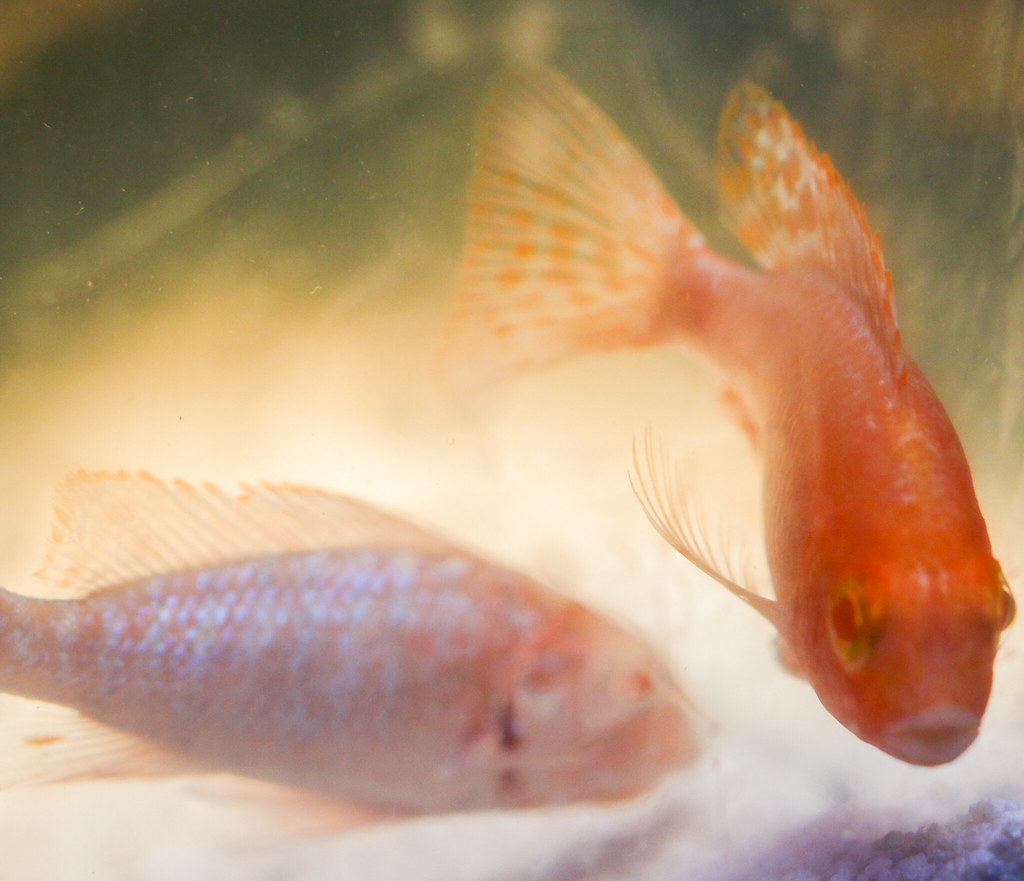
Breeding And Reproduction
Strawberry Peacock cichlids are classified as semi-aggressive and territorial, but maintaining the proper ratio of males to females can help prevent conflict. These cichlids prefer live foods but will also accept frozen, flake, or pellet foods.
The breeding behavior of Strawberry Peacock is an interesting aspect to explore. From courtship displays to nest building, and incubation period to fry care, there are various stages involved in their reproduction. Let’s delve into each of these in detail:
Explanation Of The Breeding Behavior Of Strawberry Peacock:
Strawberry Peacock is a species of African Cichlid known for their vibrant colors and unique breeding behavior. Here is an explanation of their breeding behavior:
- Mating Ritual: During the breeding season, male Strawberry Peacocks display intense colors and patterns to attract females. They engage in courtship displays to establish dominance and gain the attention of potential mates. These displays include flaring fins, dancing movements, and vibrant color changes.
- Nest Building: Once a female shows interest, the male leads her to a suitable spawning site. The male Strawberry Peacock takes great care in selecting and preparing the nest area. They often clear debris and create depressions in the substrate as a nesting site.
- Spawning Process: Upon reaching the nest, the female lays her eggs while the male fertilizes them externally. This process can result in the female releasing multiple batches of eggs, which the male fertilizes.
- Egg Incubation: After fertilization, the male Strawberry Peacock diligently guards the eggs, fanning them to provide oxygen and remove debris. This guarding behavior prevents potential predators from stealing the eggs.
- Fry Care: Once the eggs hatch, the fry remain under the male’s protection. The male continues to fan the fry, providing them with oxygen and ensuring their survival. The fry initially feed on their yolk sacs and later transition to small insects and live food.
Role Of Courtship Displays And Nest Building:
The courtship displays and nest building activities play vital roles in the reproduction process of Strawberry Peacocks. Here are the key roles they fulfill:
- Courtship Displays: The vibrant coloration and elaborate courtship displays of male Strawberry Peacocks serve several purposes. They attract the attention of females while showcasing the male’s fitness and reproductive capabilities. The displays also help establish hierarchy and dominance among males, ensuring successful mating.
- Nest Building: Nest building is a crucial aspect of Strawberry Peacock reproduction. The male’s efforts in clearing the nesting site and creating suitable conditions demonstrate his commitment and ability to provide a safe environment for the eggs. The nest acts as a protective shelter for the eggs, safeguarding them from potential threats.
The breeding and reproduction process of Strawberry Peacock is fascinating to witness. From the mesmerizing courtship displays to the intricate nest-building activities and the subsequent care provided to the fry, every step contributes to the successful continuation of the species.
Common Health Issues And Maintenance Tips
Strawberry Peacock is a peaceful freshwater cichlid that may become territorial during spawning. They prefer live foods like blood worms, snails, or brine shrimp but will accept frozen, flake, or pellet foods. Maintaining a proper male-to-female ratio can help prevent conflicts in their territory.
Highlight Potential Health Problems And Diseases Affecting Strawberry Peacock:
Strawberry Peacocks, like any other fish, are susceptible to certain health issues and diseases. It is important for fish enthusiasts to be aware of these potential problems in order to take proper care of their aquatic pets. Here are some common health issues that may affect Strawberry Peacocks:
- Ich (White Spot Disease): Ich is a common parasitic disease that affects many freshwater fish, including Strawberry Peacocks. It presents as white spots on the fish’s body, fins, and gills. Infected fish may also show signs of lethargy, loss of appetite, and rapid breathing. Immediate treatment with ich medication is necessary to prevent the disease from spreading to other fish in the tank.
- Fin Rot: Fin rot is a bacterial infection that primarily affects the fins and tail of fish. It can be caused by poor water quality, stress, or injuries. Symptoms include frayed or ragged fins, discoloration, and inflammation. Treating fin rot involves improving water conditions, maintaining proper filtration, and using antibacterial medications.
- Dropsy: Dropsy is a condition characterized by the accumulation of fluid in a fish’s body, causing swelling and a “pinecone” appearance. It is usually caused by bacterial infection, organ failure, or poor water quality. Fish with dropsy may display symptoms such as bloating, scales that stick out, and lethargy. Prompt treatment with antibiotics and improved water conditions is necessary, although dropsy often has a low survival rate.
- Hexamita (Hole-In-The-Head Disease): Hexamita is a parasitic infection that causes small pits or holes to form on the fish’s head, leading to its common name, “Hole-In-The-Head Disease.” Other symptoms include weight loss, decreased appetite, and lethargy. Improved diet, proper water conditions, and medications specific to the disease are usually necessary to treat Hexamita.
- Stress: Stress can weaken a Strawberry Peacock’s immune system, making it more susceptible to diseases and health issues. Factors that can cause stress in fish include poor water quality, overcrowded tanks, aggressive tank mates, and sudden changes in temperature or water parameters. Creating a stress-free environment is crucial to maintaining the overall health of your Strawberry Peacock.
Tips For Maintaining A Healthy Environment And Preventing Diseases:
Taking preventive measures and maintaining a healthy environment for Strawberry Peacocks can help minimize the risk of health problems and diseases. Here are some tips to ensure your fish stay healthy:
- Regular water testing: Keep a close eye on the water quality parameters such as pH, ammonia, nitrite, and nitrate levels. Test the water regularly using appropriate kits to ensure the conditions are optimal for your Strawberry Peacocks.
- Proper filtration: A good filtration system is essential to maintain clean and healthy water in the aquarium. Choose the appropriate filter for your tank size and regularly clean or replace filter media as necessary.
- Maintain consistent temperature: Strawberry Peacocks thrive in water temperatures between 76°F and 82°F (24°C – 28°C). Use a reliable aquarium heater to maintain a stable temperature suitable for your fish.
- Quarantine new fish: Before adding new fish to your tank, quarantine them in a separate tank for a few weeks. This allows you to observe their health and prevent the introduction of diseases to your existing fish.
- Avoid overfeeding: Overfeeding can lead to poor water quality and obesity in fish. Feed your Strawberry Peacocks a balanced diet and only give them the amount of food they can consume within a few minutes. Remove any uneaten food to avoid polluting the water.
- Provide hiding spots: Strawberry Peacocks appreciate having hiding spots in their tank. This helps to reduce stress and provides a sense of security for your fish. Incorporate plants, caves, or rocks into the aquarium to create suitable hiding spots.
- Maintain good hygiene: Regularly clean and maintain the aquarium by removing debris, uneaten food, and excess waste. Perform partial water changes every 1-2 weeks to ensure optimal water quality.
By following these tips and providing the recommended care, you can help keep your Strawberry Peacocks healthy and thriving in their aquatic environment. Remember that prevention is key when it comes to maintaining the overall health and well-being of your fish.
Frequently Asked Questions For Strawberry Peacock
How Big Do Strawberry Peacock Cichlids Get?
Strawberry peacock cichlids can grow to be about 4-6 inches in size.
How Aggressive Are Strawberry Peacock Cichlids?
Strawberry peacock cichlids are territorial and can be semi-aggressive, but having a proper male-to-female ratio can help prevent conflict. It’s best to have one male for every four females. These cichlids may chase and bite each other if they don’t have enough space.
How To Tell If A Strawberry Peacock Cichlid Is Male Or Female?
To determine the gender of a strawberry peacock cichlid, observe its size, coloration, and behavior.
What Is The Temperament Of A Strawberry Peacock Cichlid?
The temperament of a strawberry peacock cichlid is generally peaceful, but may become territorial during breeding and spawning.
Conclusion
Strawberry Peacock cichlids are a visually stunning addition to any freshwater aquarium. With their vibrant colors and unique patterns, they are sure to catch the eye of any fish enthusiast. While they are considered semi-aggressive, maintaining the proper male to female ratio and providing ample space can help prevent territorial conflicts.
These fish are territorial, so it is important to ensure they have enough room to establish their own territories. Strawberry Peacock cichlids have a carnivorous diet and prefer live foods such as bloodworms, snails, and brine shrimp, but will also accept frozen, flake, or pellet foods.
They are generally peaceful but can become more territorial during breeding and spawning periods. Overall, if you’re looking to add some color and personality to your aquarium, Strawberry Peacock cichlids are an excellent choice. Their beauty, coupled with their interesting behaviors, make them a fascinating species to observe.
Consider adding them to your collection and enjoy the vibrant presence they bring to your aquatic environment.
I am a passionate aquarist with over 30 years of hands-on experience in fishkeeping. My journey began at a young age, collecting fish from the wild and learning through experimentation. Specializing in tropical fish, I bring a deep understanding of the hobby to FishKeepingMadeSimple. The site provides honest, detailed reviews of essential products and accessories to help fellow enthusiasts create the best environments for their fish.

